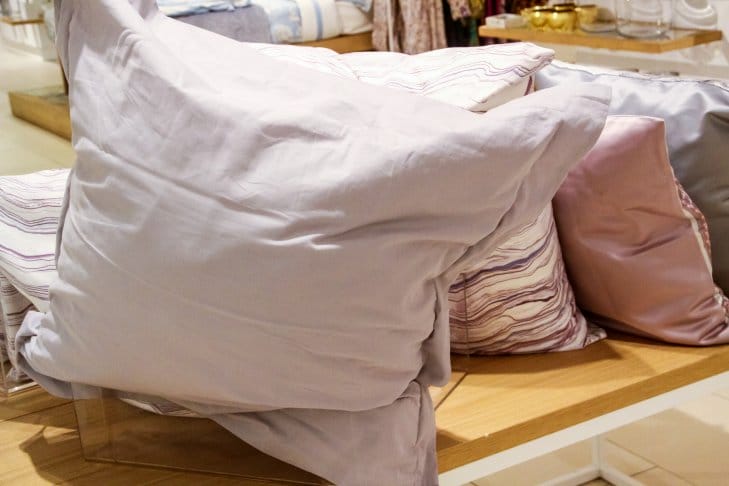Pillowcases come into contact with your facial skin and hair every day, becoming a place where germs and dirt accumulate.
Infrequent shedding can lead to skin problems, sleep disturbances and a decrease in overall hygiene, which emphasizes the importance of regular care.
Impact on skin health
Pillowcases accumulate sebum, sweat and makeup residue, creating a favorable environment for the growth of bacteria.

These bacteria can cause acne, irritation and other inflammatory processes. The skin of those who use night creams or oils becomes especially sensitive.
Cleanliness of bed linen is directly related to maintaining the health of the epidermis. Regularly changing pillowcases helps reduce the risk of clogged pores and the development of skin diseases.
Effect on hair
Dirty pillowcases cause excess oiliness and hair breakage. Dirt and sweat particles can cross the hairline, causing itching and irritation of the scalp.
Using silk or satin pillowcases, changed at least twice a week, reduces friction between hair and fabric, which prevents split ends and loss of natural shine.
Allergic reactions
Dust mites living in fabrics can cause allergies. Pillowcases that are not changed in a timely manner contain dust particles that become irritants for people suffering from asthma or dust allergies.
Washing clothes at high temperatures and drying them properly helps to get rid of allergens and improve sleep comfort.
How often should you change your pillowcases?
The optimal frequency of replacement depends on several factors. If the skin tends to be oily or has inflammation, pillowcases should be changed every two days. For people with normal or dry skin, once a week is enough.
In hot weather or during periods of active use of cosmetics, the frequency of washing should be increased.
Pillowcase Care Recommendations
Using hypoallergenic powders and conditioners for washing helps to keep the fabric soft and avoid skin irritation. Ironing pillowcases is recommended at high temperatures to destroy any remaining germs.
The choice of fabric also affects health. Natural materials such as cotton or linen are more breathable and reduce sweating.
Impact on sleep quality
Dirty pillowcases can affect the smell of your bed linen, creating discomfort during sleep. Cleanliness of the bed is directly related to the feeling of freshness and relaxation necessary for a good rest.
Fabric that has absorbed sweat and cosmetics creates favorable conditions for the growth of fungi. This can cause skin infections, itching, and other unpleasant sensations, which disrupts the quality of your night's sleep.
Pollution prevention
To reduce the contamination of pillowcases, you can use additional pads that are easy to wash. It is also recommended to wash off makeup before going to bed and follow personal hygiene rules.
Airing the bed during the day reduces the moisture content of the fabric, preventing the growth of bacteria and dust mites.








